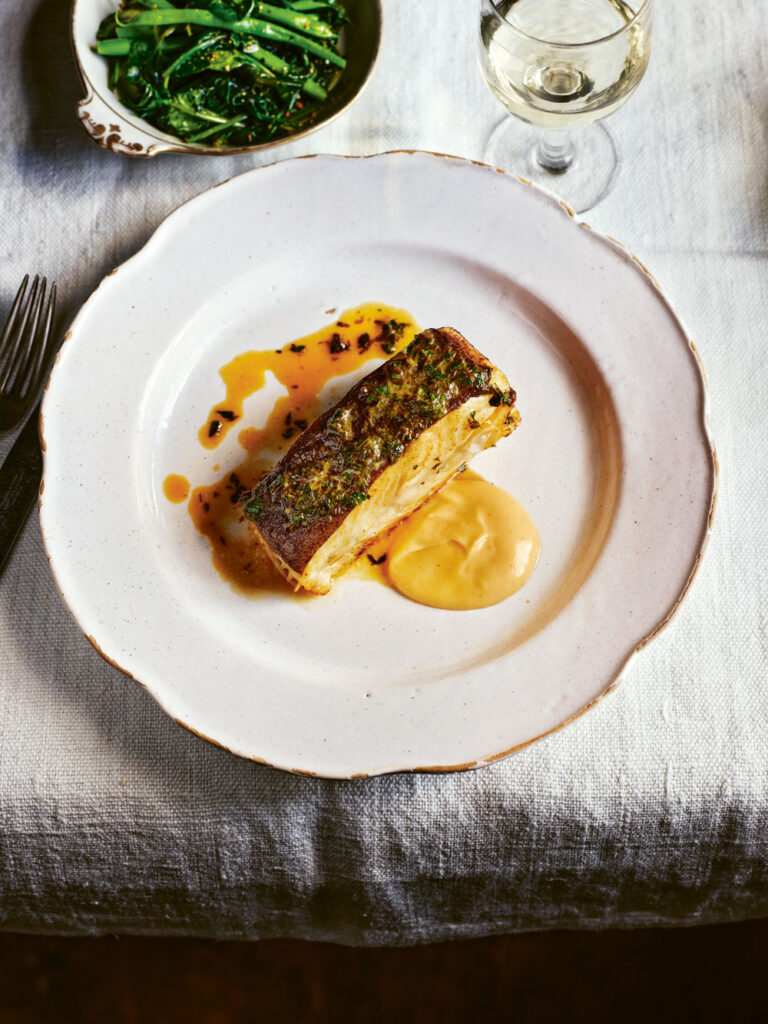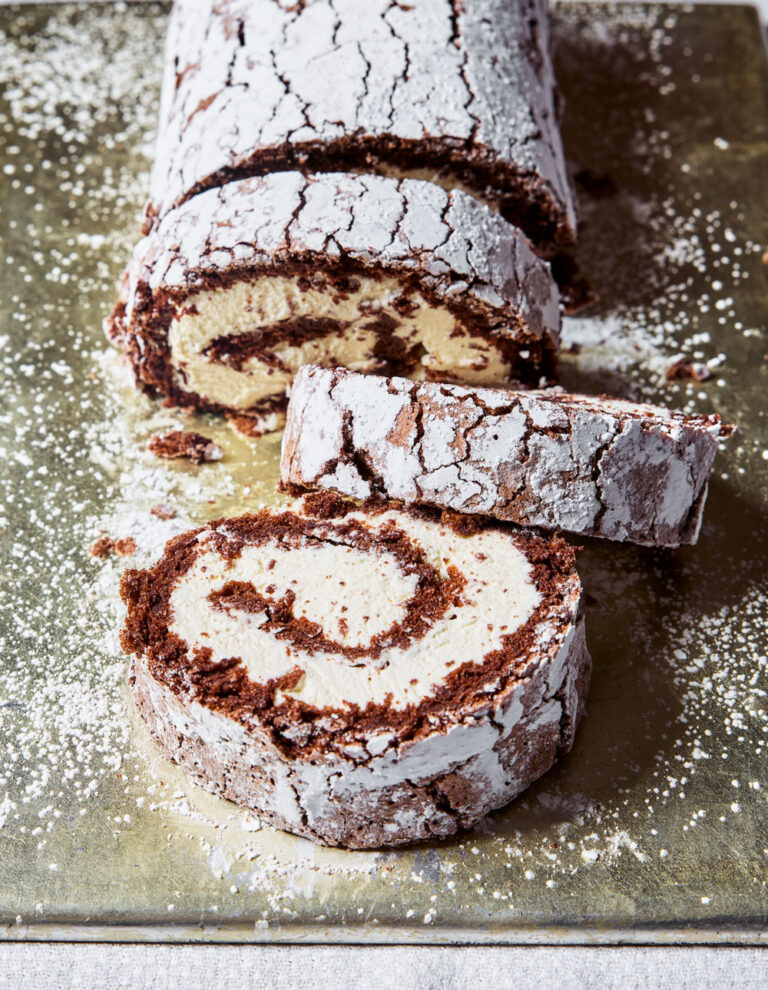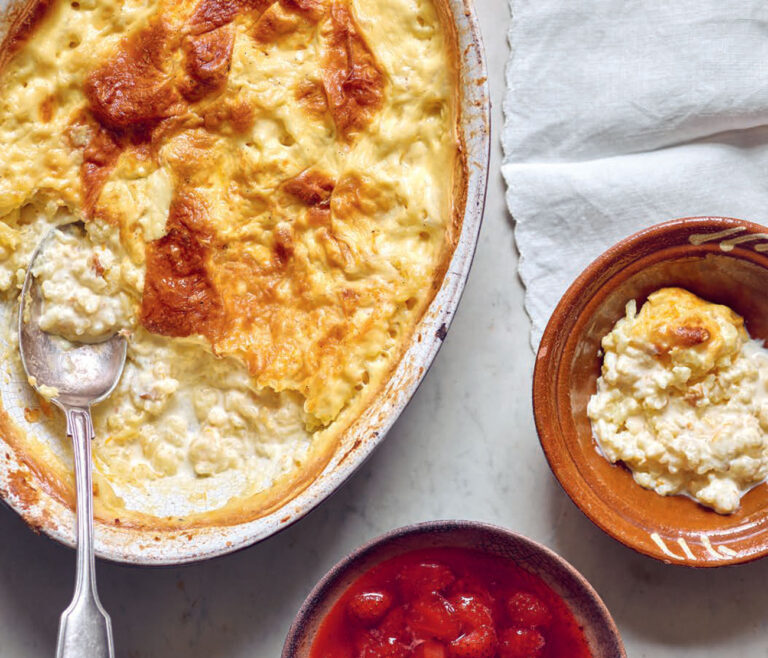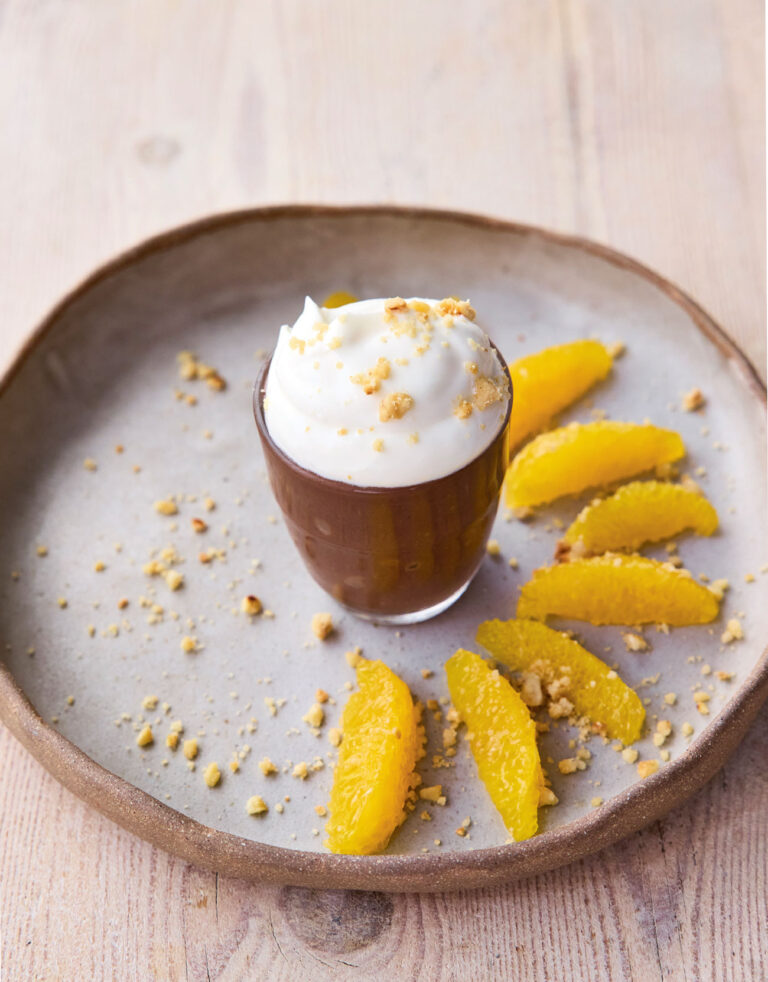Lighter Christmas Pudding
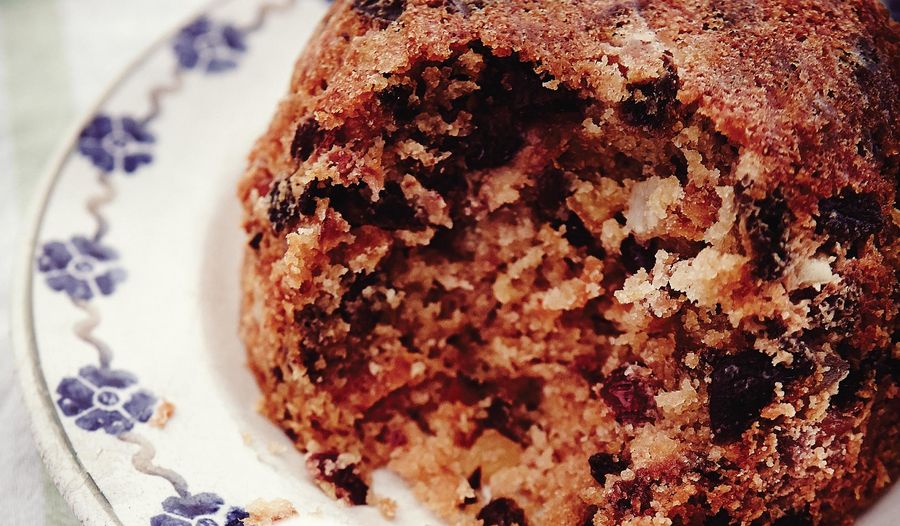
Ruby Tandoh‘s Lighter Christmas Pudding recipe from her cookbook Crumb. All the delicate flavours of panettone, in a steamed sponge pudding.
Introduction
All the delicate flavours of panettone, in a steamed sponge pudding.
I know that Christmas is a good excuse for gluttony (and I always seize such opportunities with both hands), but having a traditional, dark Christmas pudding after a day of feasting is sometimes a bit too much. It is a spectacular pudding – especially booze-soaked, lit and brought to the table in a merry inferno – but I prefer something lighter to top off the Christmas meal.
This pudding strikes a fine balance between the sort of stodginess we’ve come to expect in a Christmas pudding and the lightness required if we’re actually going to be able to stomach the thing. Because it’s suet-free, it’s far spongier than the old-fashioned types. It’s not nearly as alcoholic either: just a splash of sweet white wine to soak the fruits (save the brandy for the post-dinner drinking).
This won’t keep for nearly as long as a traditional pudding, but it will cook far more quickly, so there’s no need to lose an entire day to its preparation. Just soak the fruit on Christmas Eve, make the batter in a jiffy in the morning and leave to quietly steam for two hours on the hob while dinner’s in the oven.
Ingredients
| zest of 2 lemons | |
| 100ml | sweet white wine, such as Muscat |
| 40g | raisins |
| 40g | dried cranberries or cherries |
| 40g | dried apricots, coarsely chopped |
| 40g | prunes, coarsely chopped |
| 40g | stem ginger, coarsely chopped |
| 2 tbsp | syrup from the stem ginger |
| 40g | candied peel |
| 125g | unsalted butter, softened |
| 50g | soft light brown sugar |
| 75g | caster sugar |
| 2 | large eggs |
| 2 tbsp | vanilla extract |
| 135g | plain flour |
| 1 ½ tsp | baking powder |
| pinch of salt |
Essential kit
You will need a steamer.
Method
1. The day before you make the pudding, mix the lemon zest, wine and dried fruit in a bowl, cover with cling film and leave to soak overnight, at room temperature.
2. The following day, prepare the steamer, referring to the instructions on page 221. Prepare the pudding basin by lightly buttering all over and placing a circle of baking parchment in the base, to help with unmoulding later. Have a couple of large pieces of baking parchment and some string to hand, ready to cover the pudding.
3. Add the stem ginger, syrup and candied peel to the soaked fruit mixture. In a large bowl, cream the butter and sugars until pale and fluffy, then add the eggs and vanilla extract. Mix the flour, baking powder and salt together in a separate bowl, then stir this into the butter mixture. Now add all of the fruit and ginger along with their soaking liquid. Stir lightly to combine.
4. Spoon the batter into the prepared pudding basin. Lay one sheet of the baking parchment over the top of the basin, fold a wide pleat into it (to allow the pudding to expand as it cooks) then use a length of string tied around it to secure. Repeat with the second sheet of baking parchment. The cover should be secure but loose enough that it won’t constrict the rising pudding.
5. Bring the water in the steamer to the boil, put the pudding in and the lid on, and steam for around 2 hours, or until well risen, firm and a knife inserted into the centre comes out clean. It’s important that you keep an eye in the water levels during this time, topping up regularly so that the pan doesn’t boil dry.
6. When it’s ready, carefully unmould the steamed pudding, loosen around the edges and invert onto a large plate. Serve with ice cream (homemade, spiked with a dash of sweet white wine, is particularly good) to finish the feast.
Reviews
3 Ratings
Have you tried this recipe? Let us know how it went by leaving a comment below.
Our team is taking a break over Christmas and may be slower to respond to your comments or queries. We apologise for any inconvenience this may cause.
Please note: Moderation is enabled and may delay your comment being posted. There is no need to resubmit your comment. By posting a comment you are agreeing to the website Terms of Use.



